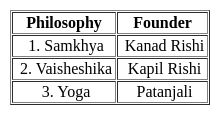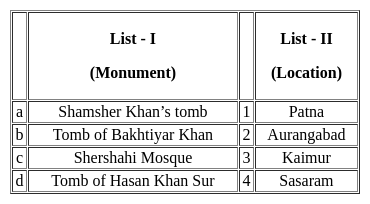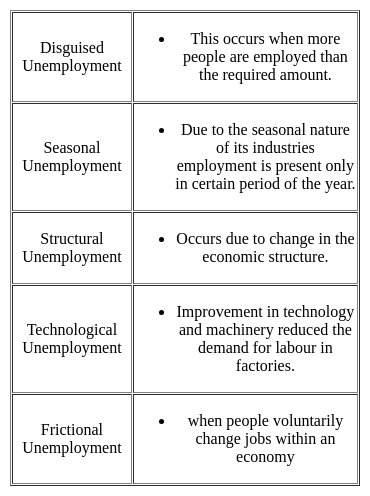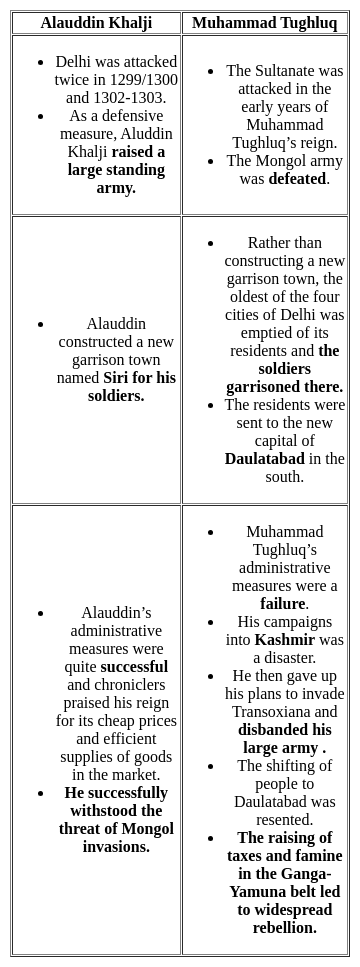UGC NET Paper 2 History Mock Test - 4 - UGC NET MCQ
30 Questions MCQ Test UGC NET Mock Test Series 2025 - UGC NET Paper 2 History Mock Test - 4
In regard of token currency issued by Sultan Muhammad Tughlaq, which of the following statements are correct?
(A) According to Barani, the metal used for the token coins was copper
(B) Ferishta says it was brass or bronze
(C) While other coins had only Arabic super inscriptions, the token coin had its legends in Persian also
(D) No care was taken to make the legend on the token coins clear and legible
Choose the correct answer from the options give below:
With reference to the Planning Commission of India, Consider the following statements:
1. It was established on 15 March 1950, with Jawaharlal Nehru as its chairman.
2. It was an executive body,
Which of the statements given above is/are correct?Consider the following statements regarding the Rajput king Raja Sawai Jai Singh of Amber:
1. He established an astronomical observatory in Ujjain.
2. He founded the city of Jaipur.
3. He was given the title of 'Sawai' by Mughal emperor Aurangzeb.
Which of the statements given above are correct?
Consider the following statements about Cripps Mission:
1. It offered the setting up of a constituent assembly after the war where mainly Indians would decide the constitution.
2. The British government would accept the constitution only if the princely states agreed to it.
3. Members of this assembly would be partly elected by the provincial assemblies through proportional representation and partly nominated by the princes.
Which of the above statement(s) is/are correct?
The First Cotton Textile Mill was established in India at
Consider the following statements regarding Humayun:
1. Shershah Suri defeated Humayun in the Battle of Bilgram
2. He defeated Afghans and set up the Mughal throne.
3. He was a highly learned person.
Which of the above statements is/are correct?With reference to the Vedic period, consider the following schools of Upanishad pairs:

Which of the following pairs is/ are correctly matched?
With reference to Indian Medieval History, consider the following statements:
1. The Mongols appeared on the northwestern frontier of India for the first time during reign of Iltutmish under the leadership of Chengez Khan.
2. The raising of taxes and famine in the Ganga-Yamuna belt during Alauddin Khilji led to widespread rebellion.
3. Alauddin Khilji sent his toughest generals: Ghazi Malik and Malik Kafur to protect the country from Mongol invasion.
How many of the statements given above are correct?
Consider the following statements about 'Pitt’s India Act of 1784':
1. It established a system of double government.
2. The company's territories in India were for the first time called 'British possessions in India'.
3. It deprived the governor of Bombay and Madras of their legislative powers.
4. The act mandated that all civil and military officers disclose their property in India and Britain within two months of their joining.
5. This act gave the British government direct control over the Indian administration.
Which of the statements given above are correct?
With reference to Dhrupad, one of the major traditions of India that has been kept alive for centuries, which of the following statements are correct?
1) Dhrupad originated and developed in the Rajput kingdoms during the Mughal period.
2) Dhrupad is primarily a devotional and spiritual music.
3) Dhrupad Alap uses Sanskrit syllables from Mantras.
Select the correct answer using the codes given below :
Choose the incorrect pair.
1) Epigraphy:- study of the old writings used in the inscriptions.
2) Palaeography:- study of inscriptions.
3) Numismatics:- study of coins
Read the statements about saint Kabir:
(C) Kabir drew his followers from among both Hindus and Muslims.
Consider statements A, B and C and choose the correct option.
(A) The palaeolithic period extends from 2 million years ago to about 12,000 years ago.
(B) This long stretch of time is divided into the lower, middle and upper palaeolithic.
(C) This long span of time covers 99% of human history.
The book 'India's Struggle for Independence' was authored by-
The name of which among the following king of the Hellenistic Seleucid Kingdom has been inscribed on the edicts of Asoka?
Who among the following was the most important divinity during the early Vedic era?
The ‘Saptanga Theory of State’ (Theory of Seven Limbs of the State) was propounded by :
Consider the following literary works :
- Raghuvamsa
- Panchatantra
- Mudrarakshasa
Which of the works given above was/were written during the Gupta period?
With reference to the Mughal architecture Pietra dura (inlaid mosaic work), consider the following statements:
- It was introduced for the first time under Shah Jahan.
- It was used in Itamad-ud-Daul’s tomb for the first time.
- It was also the basis for Taj Mahal.
Which of the statements given above is incorrect?
Match the following.
State
I. Awadh
II. Hyderabad
III. Bengal
IV. Kerela
Founder
a. Nizam-ul-Mulk Asaf Jha
b. Murshid Quli Khan
c. Saadat Khan Burhan-ul-Mulk
d. Martanda Varma
Lee commission was appointed in which year?
|
92 docs|125 tests
|






















